No matter how much we admire and celebrate the world’s diversity and numerous cultures and religions, we can not deny that every person on the planet has a common fate that can be summarized in a single High Valyrian (pronounced V-ull-E-re-Yun) phrase: Valar Morghulis; All men must die. Death has many faces over its eons-long history of being portrayed as life’s unconquerable final boss, and it varies across cultures.
The absolute end game, the long slumber that never ends, the most-dreaded inevitable outcome of life this side of Thanos; Death has taken many disguises over its eons-long history of being depicted as life’s undefeatable final level. Death is governed by the goddess Hel in the Nordic areas, whereas Yama, the dharmic adjudicator in India, judges your afterlife fate.
But the most prominent image that likely comes to mind is that of the Grim Reaper, the scythe-wielding, robe-wearing, skeletal personification of macabre. If you ask us why, we believe it is because every human being has a sick fascination with death, which holds our imagination and runs wild within it.
What better way to express your personal feelings about the be-all-and-end-all than through a movie? Movies have used the Reaper’s services since at least 1957, and he is given a staggeringly diverse spectrum of roles, from tragic to funny to outright apocalyptic. So, how about we have a look? Here are the Top 10 Depictions of Death in Movies – Explored. And, just so you know, there will be spoilers galore.
Reaper – The Frighteners (1996)
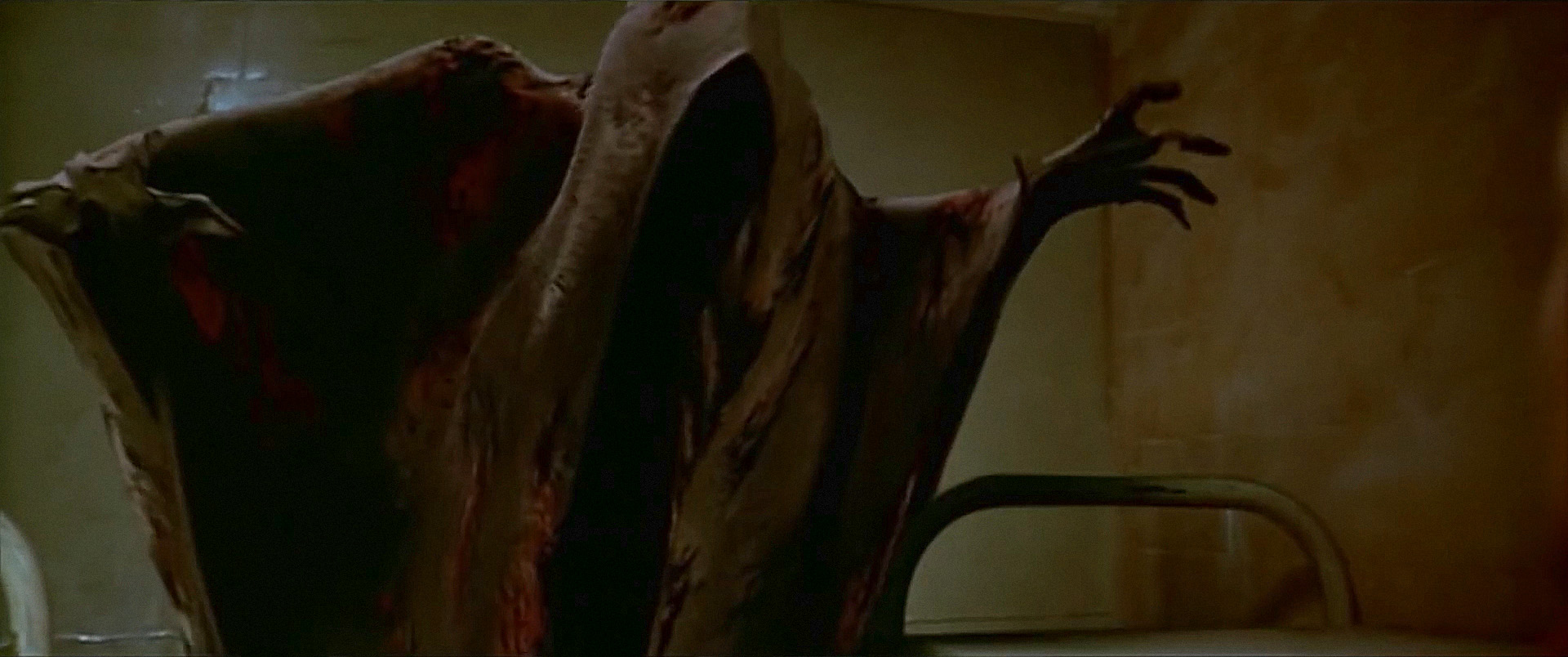
Architect Frank Bannister (Michael J. Fox) lost his wife Debra in a freak car accident in 1990, but in the process gained the peculiar power to commune with ghosts. He ends up befriending three of them: Cyrus the Gangster, Stuart the Nerd, and The Judge, a gunslinger from the Old Wild West. Together, they start an exorcism con that lines Frank’s pocket with some decent change, but their lives change forever when they encounter an entity that kills one of their victims and leaves a number etched on his forehead before fleeing.
Determined to find out the link between this figure and his wife’s death, Frank sets out on a journey that sees him traverse the spiritual plane and eventually gain salvation; but only after dealing with something more deadly than Death itself. At least with the Reaper, we know what we’re getting; Peter Jackson somehow managed to make inevitable demise seem like a cheerful prospect. While Johnny Bartlett is certainly no Angel of Death, he seems to be making a sprint for the title. A maniacal serial killer in life, he was somehow resurrected and he promptly resumed stacking numbers on his kill count while posing as Mr. Grim.
And once you realize that, it makes the prospect of facing him somehow even more ominous; a point that was driven home by the haunting, fluidic special effects that characterized his personality. Death isn’t logical; it is natural and can happen anytime. It’s why most people are scared of the idea that Death will come for them when they’re not ready for it.
Jackson takes that idea and uses it as a mask for his ghostly killer, which is what makes the horror of this film so tangibly palpable. A roller coaster of entertainment with some chillingly effective moments of genuine terror, The Frighteners is a movie that lives up to its title and somehow makes Death seem like a more welcome prospect. And besides, who doesn’t want to see Marty McFly kick Death square in the ass?!
The Angel Of Death – Hellboy II: The Golden Army (2008)
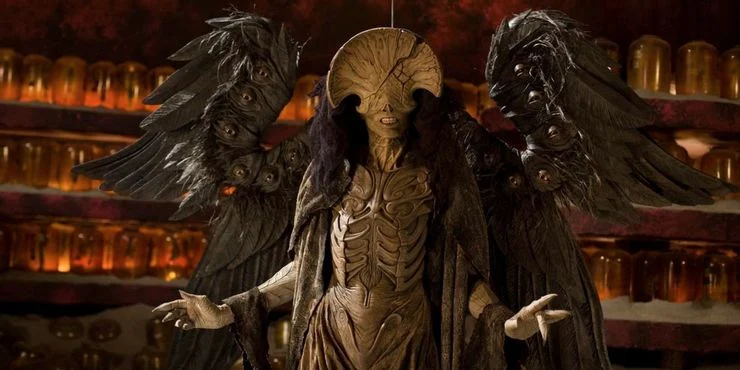
The Hellboy movie franchise is one we’re extremely torn up about. On one hand, it has completely decimated any sense of continuity from the comic book source in service of fulfilling generic film tropes and racking in dollars. On the other hand, it gave us one of the creepiest depictions of Death that we have seen on-screen to date, and for that alone, it could get a pass. You see, things aren’t going too well for Big Red in this ill-conceived sequel.
He doesn’t know how to have a normal relationship; he’s frustrated with working clandestinely and is still reeling from the death of his adoptive father. So you can imagine that an ancient harbinger of doom would not be particularly uplifting for his spirits. In fact, Hellboy often drowns himself in said spirits and that leaves him open to fatal injuries, which is exactly what happens. Desperate for help, Liz seeks out the location of the Golden Army and makes a deal for Hellboy’s life with his personal Angel of Death; and if it were us instead, we’d have run immediately.
Most people imagine Biblical angels look like a bust sculpted by Michelangelo, but Guillermo del Toro’s practical effects team had the right idea when designing the Angel of Death. Calling it unsettling would be a disservice to the character, as it was a highlight of the entire film and was created specifically for it. Like most Reapers, this one is skeletal and dons a flowing black robe as well. But that’s where the similarities end. His skull is shaped like a crown from his orbital bone-upwards, fanning out in an arch across an eye-less brow.
Oh, but don’t worry about that; he’s got a dozen of them implanted in his wings, all aimed at your bloodless face; or perhaps they’re just peering into your sinful soul. His heart is made of sand, which he will gladly show you, and life to him is indifferent. He’s only there because he always appears at every deadly crossroads in Hellboy’s life, he has done so for centuries and will do so till he either dies or fulfills his purpose.
The idea that only death can pay for life is tragic but beautiful; the realization that by gaining said life, you’ve doomed existence itself is the kind of Lovecraftian terror we expect from the Angel of Death and in that regard, Hellboy 2 goes well beyond our expectations. Also, a shoutout to Doug Jones for heaving that 40-pound wing contraption and delivering lines in 2 different pitches to add an extra layer of mystique and macabre to a character that literally personifies Death.
Death – Harry Potter and The Deathly Hallows Part 1 (2010)
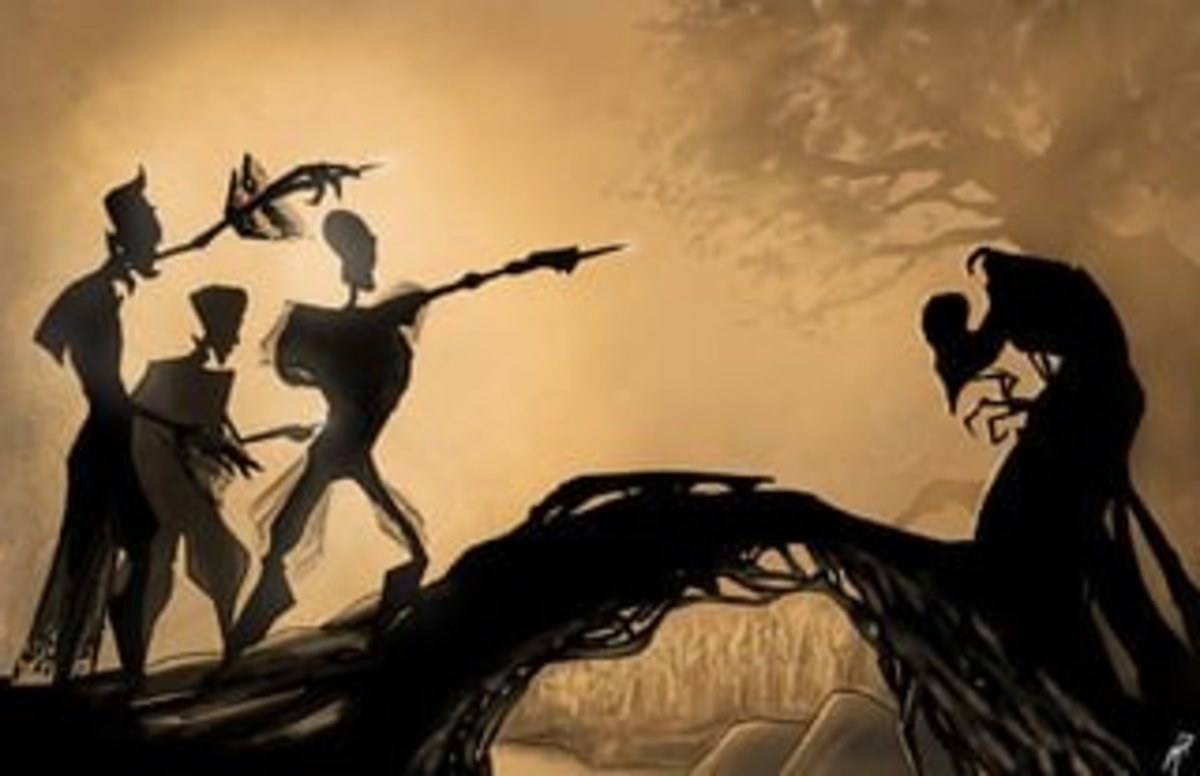
We’re not gonna go over all the plot details of this film for reasons that should be obvious. Harry Potter is a series that leapfrogged over age barriers and captured the hearts and minds of all kinds of readers with its wonderful world of witchcraft and wizardry.
But every coin has two sides, and the latter books in the series reveal the dark underbelly of the Wizarding World; and no, we’re not gonna bring up Ms. Rowling’s post-Hogwarts Twitter shenanigans. You see, in Harry’s world, there are 3 powerful objects that have become nearly mythic over the years that have gone by; the Elder Wand, the Resurrection Stone, and the Invisibility Cloak.
For 6 entire books, fans kept questioning how Harry or his dad for that matter got hold of such a cool accessory that allowed them to roam about Hogwarts late at night, undetected. We’d figured that it would have had to come from a really powerful and ancient sorcerer because no modern magic could replicate its effects.
We never thought that the source would be Death itself. In a sequence beautifully animated by Framestore and narrated by Emma Watson, we see how the Deathly Hallows came to exist and the tale is as cheesy as it is grim. 3 powerful wizards who were brothers once came upon a pass that claimed lives regularly.
Using their magic, they created a bridge and were about to cross safely when they were stopped by the billowing personification of Death. It gave the brothers the three items mentioned earlier as a “reward” for their wits and problem-solving skills. But in actuality, they had cheated Death, and Death would always have its due.
The first brother gave in to avarice and vengeance and was murdered because of it. The second committed suicide when he couldn’t bring a loved one back from the Dead. The third brother managed to live a long life thanks to his cloak and greeted Death like an old friend at his deathbed. He dies of natural causes and passes his cloak on to his children.
Sure, the person who owns all three items at the same time effectively becomes the Master of Death itself, but it is the inevitability of Death that is so innocently, yet menacingly delivered in the span of a few short minutes.
All 3 of the brothers died different deaths, but shared the same fate; a fate that Harry Potter villains have literally torn their souls apart to avoid. With a few painted frames and the dulcet tones of Hermione Granger, it is made abundantly clear to us that in the face of your reckoning, everything is useless; be it a Horcrux or the Philosopher’s Stone.
The Devil’s Reaper – Solomon Kane (2009)
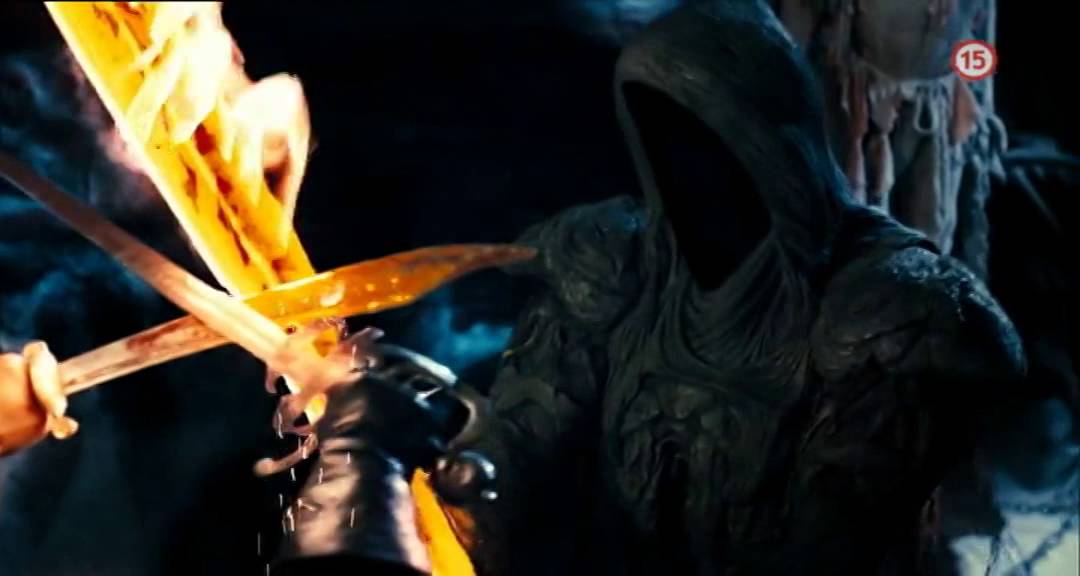
For our older viewers, the name of the movie should ring a couple of bells. Before comic books became the medium of choice, America’s children would read pulp magazines as a way to keep themselves entertained. It was amongst those pages that Solomon Kane first appeared: a rapier-and-flintlock-wielding adventurer whose goal was to wipe out all evil from the world.
This 2009 offering tries to explain how he got there, and while it never goes beyond being a live-action adaptation of one of America’s oldest “heroes”, it has been immortalized for its unreasonably explosive opening sequence which features pirates, treasure, and the Devil’s Reaper himself; all within a span of about 10 minutes! You see, before he was traveling across the globe solving people’s problems, he was a leading cause of them.
As a 16th century privateer from England, his life was pretty much sustained by greed, lust, and an appetite for murder; all things bad enough to earn you a private audience with good ol’ Satan. And that’s how this movie begins, with Solomon coming face-to-face with the Devil’s Reaper while trying to escape some rather pissed-off Ottomans. His personal sin-gauge is overflowing with heresy, and the Reaper is here to collect his soul for Satan.
Director M.J. Bassett took a page out of Peter Jackson’s book and used an animation style similar to the LOTR films when creating the Devil’s Reaper, which makes him look and feel a lot like Sauron. Every word uttered by him is immediately impactful and lingers in your conscience long after he’s said it; though that could just be the audio playing tricks on your mind.
Oh, and did we mention that he also has a badass sword that he sets ablaze with Hellfyre?! He’s only in the movie for a cup of coffee, but Bassett’s decision to open the film with a literally soul-chilling scene has done its trick on us; the Devil’s Reaper has to be our favorite cameo appearance from the personification of Death across cinema history.
Reaper – Bill & Ted’s Bogus Journey (1991)
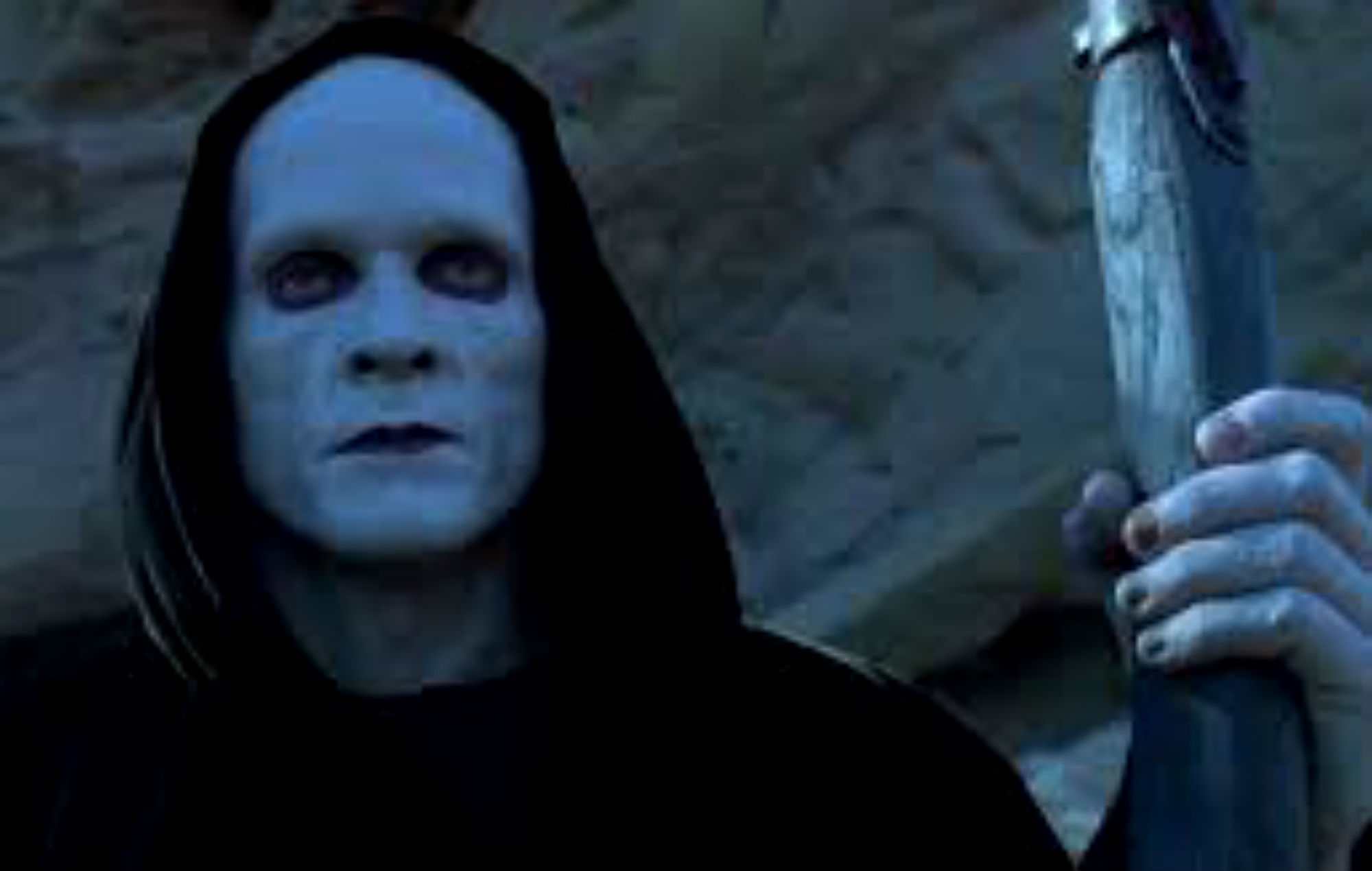
Sure, many men on this list can claim to have hoodwinked Death out of its dues, but have any of them given it a crack-splitting Melvin? We didn’t think so either, and that is exactly why we love Bill & Ted’s, Bogus Journey. It’s kinda hard to believe that the man who played Neo and John Wick broke into Hollywood with the father of all slapstick comedy franchises, but that just goes to show how versatile Keanu Reeves is; we’ve said it a million times, but the guy’s got range!
The plot of the movie is a trainwreck, like most installments that feature the WyldStallyns (pronounce: Wild Stallions); once again Bill & Ted must travel through time to protect the very fabric of reality and battle time-traveling villains and killer robots to secure the future. But this time around, they end up tussling with the Grim Reaper when the robots actually get to them, and as you’d expect, chaos and hilarity ensues.
From the moment Ted utters the words, “How’s it hangin’, Death?” you know that the spiritual entity is about to be taken for one helluva dude-ride on the wedgie machine; which is incidentally how their first encounter ends. Yes, the Grim Reaper himself gets wedgied hard and left to recover by our dastardly duo.
And it doesn’t get any better for him either, as Chris Matheson & Ed Solomon make him realize just how out of touch he is by spoofing the premise of one of our later entries to gut-wrenchingly comical effect. By the time the movie ends, Death has been thoroughly robbed of its purpose by Bill & Ted, to the point it joins them for an encore performance by the goofball Stallyns.
William Sandler’s unexpected comedy chops carry every frame he’s in and is a very big reason why Bill & Ted’s Bogus Journey works as well as it does. The gradual unraveling of his very sanity as he realizes he cannot break these complete idiots is an absolute delight to watch and gives the movie some of its best moments.
Death Reaper – Last Action Hero (1993)
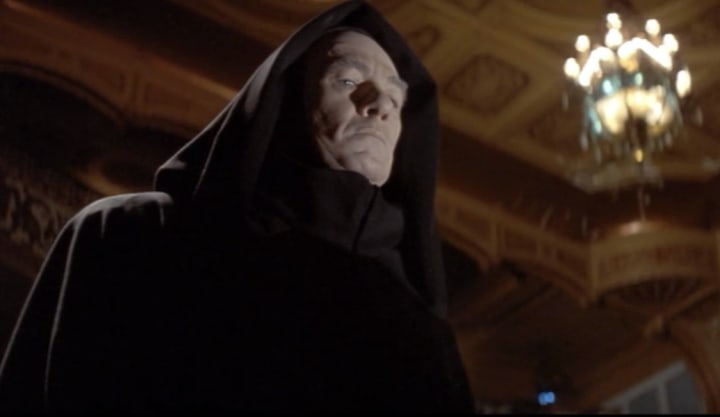
Only the legendary Sir Ian McKellen could have stolen the show with a 2-minute cameo in a movie that also stars Charles Dance and Arnold Schwarzenegger, and the fact that he was portraying Death just puts the cherry on top of the cake. Last Action Hero is a cheeky meta-deconstruction of the action genre that balances its heels on explosive fight sequences and cheesy comedy without ever forgetting that it is, in essence, a parody of the entire genre. Our protagonist is young Danny Madigan who lives with his mom in a crime-ridden area of New York City.
Having lost his father at a young age, Danny finds comfort in action films, especially the heroic, muscle-bound LA Cop Jack Slater. He gets the opportunity of his dreams when the projectionist of his local theater offers him a golden ticket to watch an early screening of Jack Slater IV.
Little does he know, he’s about to get to know his idol up-close and personal. After going on a dream-like adventure with his hero, Danny ends up breaking the fourth wall- literally- and letting Slater’s archenemies cross into the real world. In the process of dealing with his own mess, Slater ends up getting shot.
That is when Sir Ian McKellen strides into the theater, sad-eyed and soft-voiced. If Death were a real entity, we’d imagine he’d be a silent, omniscient enigma; because that is exactly how Sir Ian plays It, and it still sends shivers down our spine. Though the character itself is a part of the larger meta-commentary on films in general, his sincere and ominous delivery will make you forget you’re in a parody film for the entire duration of the 120 seconds he’s on-screen.
And those shivers will turn into full-fledged creeps when you realize; he’s a part of it. Jack and Danny assume he’s been released from one of the movies because of the ticket stub but turns out, he’s the actual personification of Death. He only came here because while he can see Danny’s death, he can’t see Jack’s and that made him “curious”.
When Danny asks him to save the dying man, he nonchalantly quips that he “doesn’t do fiction”. This no-nonsense approach to the character is what made McKellen’s Grim Reaper such an unsettling presence in a movie that was otherwise loaded with hilarity. It’s a testament to the man’s immense pedigree that he was able to do a spot-on impression of Mr. Death himself without actually having met him, and is firmly in the god tier of our favorite film cameos.
Death – Cemetery Man (1994)
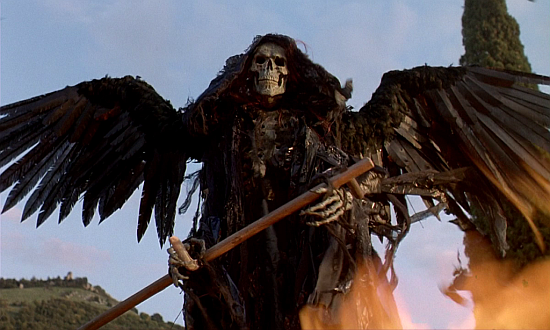
You know, for a job that keeps you surrounded by dead bodies, you’d think cemetery caretakers would be more careful about what they did around these resting souls. Try telling that to Francesco Dellamorte though, who will bang your hot widow right next to your grave and blow your undead brains out for good measure!
This international co-production between Italy, France, and Germany is weird from the word to go, and it only gets more bizarre with every passing moment. Rupert Everett’s Francesco (let’s call him Frank for convenience’s sake) already has a very creepy job taking care of dead bodies round the clock.
To make matters worse, recently, the dead just refuse to…stay dead. So Frank and his assistant just go around shooting any zombies they encounter because it’s just easier that way. One fateful day, however, Frank has that sacrilegious tryst we mentioned at the start of this entry and things take a sharp left turn for him.
As the zombies keep encroaching upon his cemetery and sanity, Frank’s mind finally snaps when the personification of Death approaches him and tells him to stop shooting dead people and start shooting the living. When we say it like that, sounds super scary and ominous, right? Sadly for Michele Soavi, that’s not how this scene will ever be remembered.
Having a low budget made it impossible to put in high-quality special effects, so the filmmaker decided to just wing it with a skeleton prop that was given a red wig, black hooded robe and a pair of wings.
At the end of the day, it does the job, but we have to admit that we burst out laughing when we saw what was supposed to resemble Death in the context of this film, but ended up looking like a dollar-store Halloween decoration. The rest of the film is a cheese-ball ride through crazy town, but man, if you want one reason to watch it, make that the Death scene.
Unseen Spirit of Death – Final Destination franchise (2000-2011)
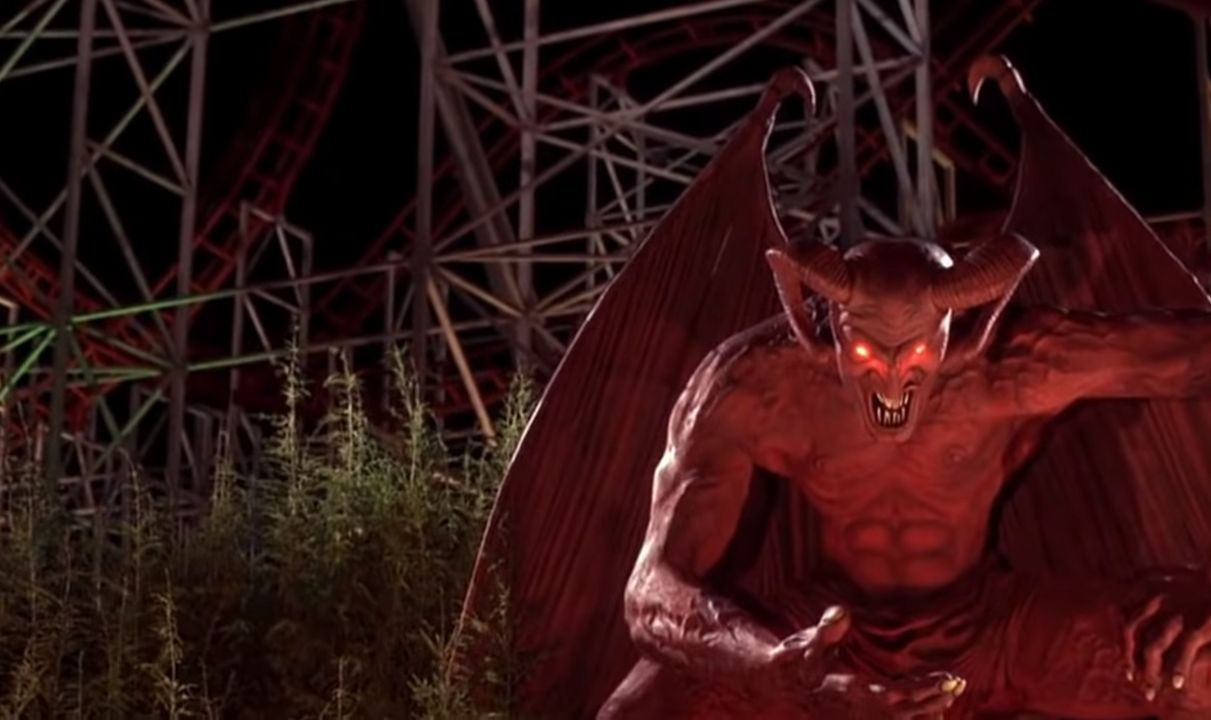
You know, we’ve spoken a lot about the human fascination with Death and our inherent need to stick a face on things we don’t quite grasp. So it’s quite refreshing to talk about the inevitable without actually having to see it. Gives a nice change of pace to the audience, keeps the characters in the film on their toes, and adds a nice bit of ambiguity to the story to pad out its flatter moments.
Every Final Destination movie plays out the same way: a group of teenagers is about to perform a “fun activity” when one of them has a premonition of their deaths, which are about to take place in a few moments. This character ends up saving some of his friends, and they spend the rest of the movie figuring out how to avoid getting killed because as it turns out; Death holds effing grudges.
Soon, the characters start dying in the order they were meant to die in until it seems like our brave protagonists have finally managed to escape Death’s clutches; only for them to die in the last moments of the film to set up the sequel. The formula gets repetitive enough for them to start playing with it by Final Destination 3, but the overall idea of Death being this ever-present, ever-watching entity that can manipulate events to “get its due” is what makes the whole franchise so iconic in the first place.
Every film steps up the stakes as characters start debunking Death’s seemingly-inescapable trap and Death starts taking a more direct approach with his due collection. We never see it, can’t even hear it speak, but we all know it’s there; lurking, waiting for the right moment to strike.
That dreaded anticipation and the knowledge that Death is, in the end, inevitable has allowed the filmmakers to put out 5 installments of pure Hollywood entertainment that keeps you hooked till the very end, and then some.
Angel of Death – The Adventures of Baron Munchausen (1988)
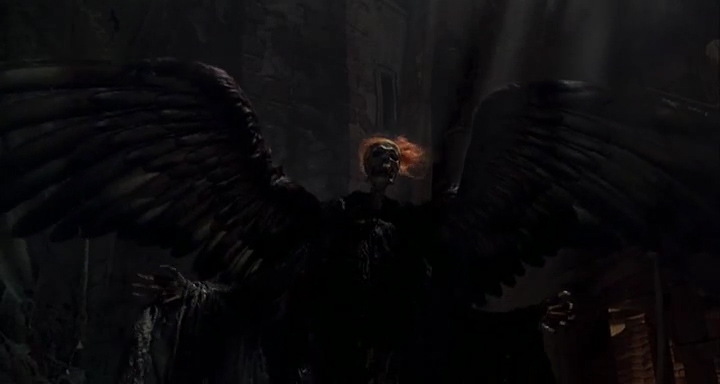
In a film that is the closest thing to the surrealist theater we will ever see in film history, does it not make sense that Death would be just a plot device to “keep the show going?” If you ask the good Baron Munchausen, that seems to be just the case. The film opens with a play about the Baron’s life; ring any bells, Hawkeye fans?
While the production is flamboyant and fanciful, the atmosphere is slightly dampened by the fact that the city it’s being performed in, is currently under attack. And in a desperate attempt to “raise troop morale”, its mayor has just executed their bravest soldier on-ground. Amidst this chaos, an old man claiming to be the actual Baron clambers onto the stage and starts mouthing off like a total hater, pointing out flaws, inaccuracies, and all sorts of “mistakes” with the entire thing.
As he’s escorted backstage, he’s set upon by the Angel of Death, who is here to claim his soul; the only problem is, it seems like Angel’s drunk on the job because he can’t seem to nab the ol’ Baron for the life of him. On at least three occasions, this prop-Grim Reaper is so close to dragging Munchausen’s soul to hell, but the wily fox always beats him to the punch. By the time the film ends, you’re left questioning if anything you saw was actually true; or was it just another story that the lofty Baron was feeding you as your mind (and guts) unraveled.
Though its production struggles became the stuff of legend, we think the actual movie itself is criminally underrated and definitely deserves a watch, especially for the scene where the Angel of Death gets deleted away trying to get the Baron off a launched cannonball is Priceless.
Death – The Seventh Seal (1957)
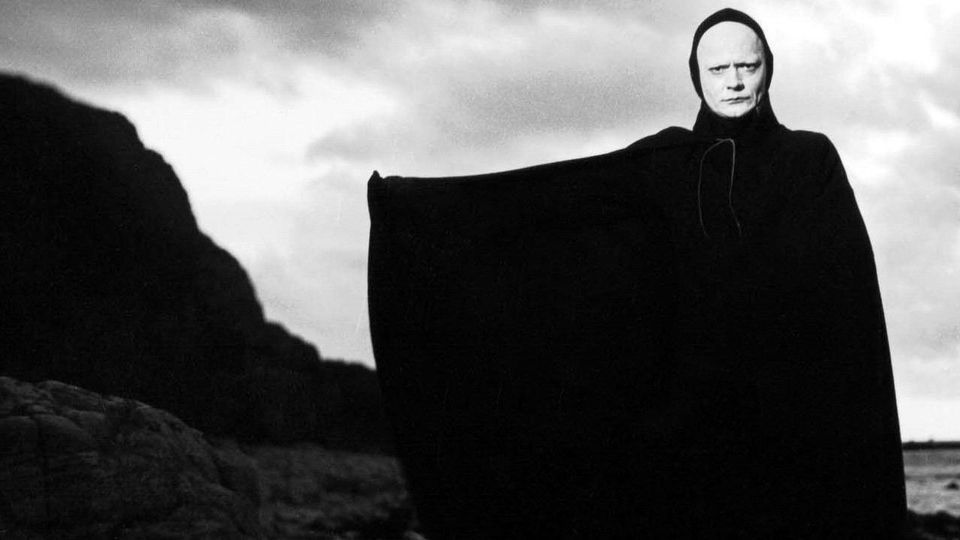
Swedish director Ingmar Bergman is a pioneer whose films have been and will be studied for decades as some of the finest pieces of art-house cinema to ever exist. Bergman was a consummate filmmaker who spent months, sometimes years pondering his screenplay before even writing it. Many of his films draw inspiration from his personal life, but perhaps none do it in a manner as eloquently morose as his seminal 1957 offering The Seventh Seal. The premise of the film is simple enough.
A disillusioned knight and his cynical squire return to their homeland from the crusades, only to find it ravaged by the Black Plague. While the squire rests, the knight encounters the personification of death and realizes why it is here. Having lost faith in his cause and determined to leave this earth having done “one meaningful deed”, he engages the Reaper in a deadly game of chess, having heard of his reputation.
There is only one condition: if the Knight wins, the Reaper spares him. Thus begins a morbid chess match between the two that lasts for the duration of the film, but it isn’t the genius moves that either player is making that gives this film Oscar-worthy gravitas. The name of the film is a reference to the Seven Seals that secure the book that John of Patmos saw in his apocalyptic vision.
The Book of Revelations states that when the seventh seal is opened, there would be silence in Heaven for about a half-hour before God sends 7 angelic trumpeters to herald the coming of his Wrath. It is this silence that serves as a core philosophical struggle for the knight. Having been anointed in the light of God, it is his duty to believe. But seeing the ravages of war has left his faith shaken, and that has opened him up to the arms of Death, who is in no rush to make him dance the Dance Macabre.
It is a heart-rending watch that draws on Bergman’s personal struggles with his own faith and really makes you re-think your own idea of faith. The end of the movie is tragic and expected, but by the time you get to it, Bergman’s directorial prowess and Bengt Ekerot’s pitch-perfect portrayal of Death manage to ensnare your senses with their omniscience and make you join the Knight and his companions in their evil dance routine.
